Fiber reinforced composite materials such as glass fiber, carbon fiber and glass fiber reinforced plastic have been widely used as building materials, mainly in structural reinforcement, glass fiber reinforced plastic tile and glass fiber reinforced pultrusion profiles.
According to a report released by research firm MarketsandMarkets, the global construction composites market is expected to reach $8.98 billion by 2026, with a CAGR of 6.00% over the forecast period. The construction field has become the most potential fiber composite application market after the automobile, aerospace.
Now, let's take a look at some of the world's most famous buildings using fiber-reinforced composites.
1. Eu Prosecutor's Office building
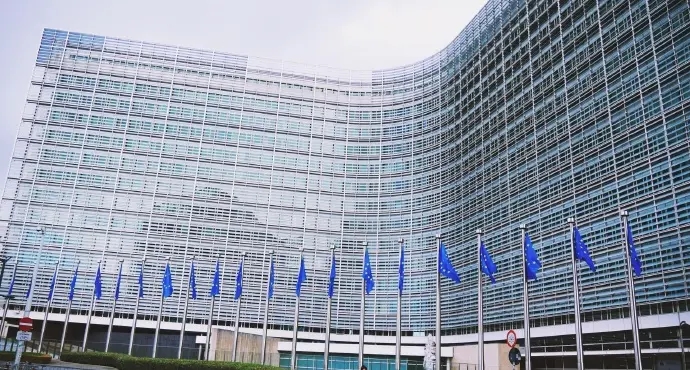
The Dutch TGM construction company, Indupol, Linkvision, BuFA and Solico, through close and successful cooperation, successfully realized the unique design and shape of the facade of the EU Prosecutor's Office building, infusing innovative composite material application technology into the construction industry.
The composite parts were manufactured by Indupol and moulded with a hand paste process to obtain specific shapes and sizes using resin from Liansi and Bufa (delivered by distributor Euroresins). After the molding, the finished product is treated and coated with white topcoat before being transported to the installation site. The installation of the product requires only a small amount of scaffolding, which is lifted by a crane and mounted onto the building.
2. The Building of Newtown Primary School, Calcutta, India
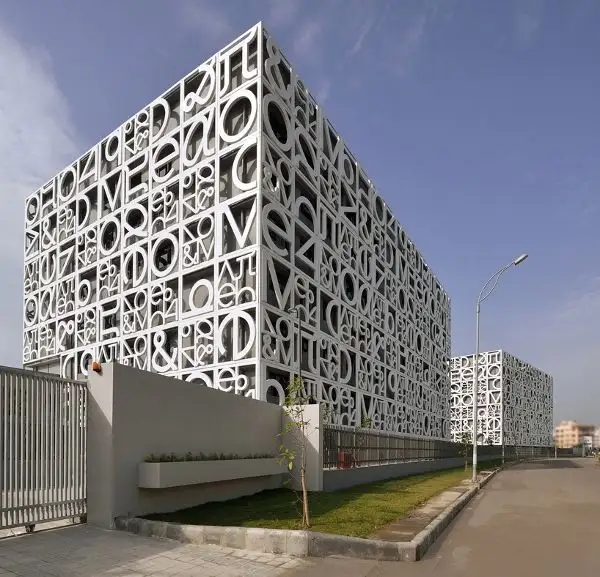
Designer Abin Chaudhuri of Abin Design Studio has created a unique landmark for Newtown Primary School in Kolkata, India. From a distance, each facade looks like an intricate Rubik's Cube® with letters and mathematical symbols. The letters and symbols create a kind of custom template for the facade. These structures provide children with a graphical but interesting aesthetic experience.
Due to the need for a wide variety of complex shapes that are durable and lightweight, the team created 488 panels measuring 3.2 x 3.2 meters from glass fiber-reinforced composites, each consisting of 13 different combinations of symbols. After experimenting with several different composites and non-composites, the team determined that a fiberglass felt-reinforced polypropylene system best met its needs. Each plate weighs only 154 pounds. A grid-like frame made of steel is matched with FRP plates, and Z-shaped steel is embedded in the plates and fastened to the building. Structural concrete slabs protrude from the surface of the building to ensure that a precise number of slabs can be installed on all surfaces of the facade. This makes the panels easier to install from behind and ensures better lighting. The panels are mounted in different directions, giving the facade a random effect. When completed, this facade wraps around a 27,000 square foot building.
3. San Francisco Museum of Modern Art (SFMOMA)

Kreysler & Associates designed 700 Rainscreen fiber-reinforced composite panels for the east facade of the San Francisco Museum of Modern Art (SFMOMA). These FRP panels cover the 10-storey building and are waterproof. These FRP panels are attached to an aluminum frame, creating a horizontal rippling texture like the waters of San Francisco Bay. According to Bill Kreysler, president of Kreysler & Associates, the SFMOMA extension is the largest application of fiber-reinforced composite cladding for a multistory building in North America.
The FRP plates are made of recycled foamed polystyrene (EPS) foam molds and are first ground into rough shape by a CNC wire machine and then used for the final double-curved surface with a five-axis CNC router mechanism. No two boards are the same, and most are 5.5 feet wide and 6 to 30 feet long. Its surface thickness is only 3/16 of an inch.
4. The Apple Headquarters Building
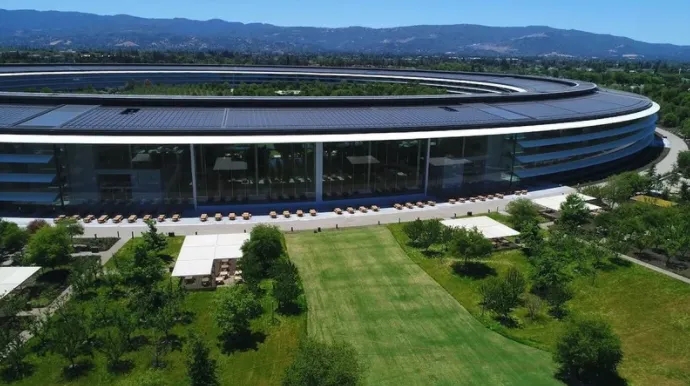
Apple's new $5 billion headquarters in Cupertino, California, will feature a 64,250 square meter roof made by Dubai's First Composite Technologies.
It's the largest freestanding carbon fiber roof ever built. The circular roof consists of 44 panels of the same radius, each 70 feet long and 11 feet wide, connected to a small central hub. Assembled and tested in the Dubai desert before being shipped to Cupertino, Calif., it weighs 80 tons and is more than 140 feet in diameter. By comparison, the Boeing 787 has a takeoff weight of less than 30 tons and a wingspan of 197 feet.
5. Grand Mosque in Mecca
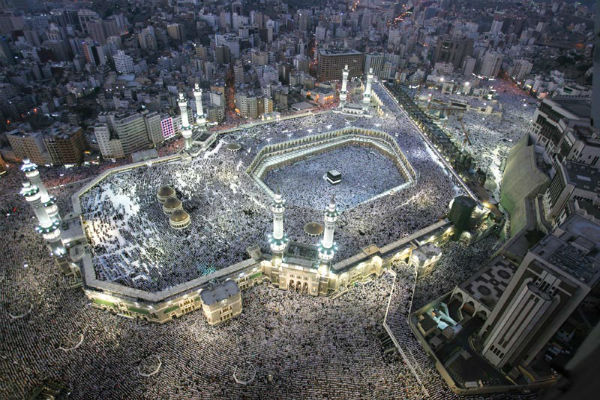
This is another spectacular creation by Dubai's First Composite Technology (PCT), which has built one of the world's largest sliding domes at Mecca's Grand Mosque. It will be 36 meters in diameter, driven by a moving system, with a lower dome and a double layer of upper cladding. Glass fiber reinforced polymer (GFRP) panels are used to cover the structural steel frame of the roof, according to Djibril Waimer, marketing and events coordinator at PCT. The frame, which is supported on four electric wheel drives, can slide to the side so that the courtyard can be open air, providing natural ventilation to the mosque.
6. Russian Orthodox Cathedral, Paris
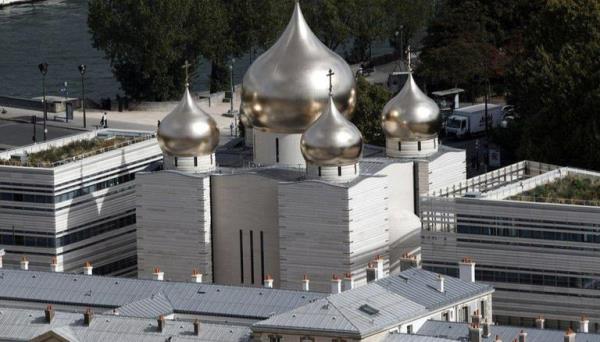
Sicomin, a company that formulates high-performance epoxy resin systems, supplied five gilded domes of the Russian Orthodox Cathedral in Paris with a complete set of composite materials that make both molds and components. Sicomin supplied Decision, Carboman Group, Switzerland, with materials for the cupola moulds, using Sicomin's SR8100 / SD7820 high efficiency 120°C Tg epoxy resin filling system for a set of glass fibre multi-axial fabric and basa wood reinforced moulds.
돔 자체용 시트는 Sicomin SR8100 / SD4772 에폭시 관류 시스템과 특별히 개발된 유리 섬유 강화 재료 레이업을 사용하여 프랑스 Vanna에 있는 Multiplast의 시설에서 생산됩니다. 중량급 4축 브랜드 직물 QX1180과 500gsm 기계 직물을 결합하여. 돔에 Sicomin의 복합 솔루션을 사용하면 프로젝트에 많은 이점이 있습니다. 경량 지붕은 신속하게 설치할 수 있으며 구조물의 정적 하중을 줄일 수 있습니다. 또 다른 이점은 지붕의 오프라인 생산 및 장식이 통제된 조건에서 수행될 수 있고 생산 공정이 날씨의 영향을 받지 않는다는 것입니다. Sicomin은 장인이 86을 도금하기 전에 완제품의 안정성을 보장하기 위해 후 경화 공정을 최적화하기 위해 실험실에서 광범위한 DSC 테스트를 수행했습니다.
7. 에코캡슐
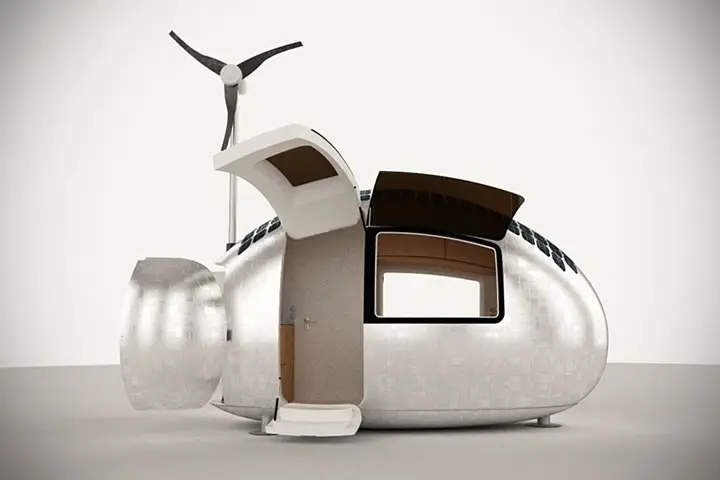
슬로베니아 팀은 경량 복합 재료를 사용하여 길이 4.57m, 폭 2.13m, 사용 가능한 면적이 6.5제곱미터에 불과한 작은 캡슐 하우스인 Ecocapsule을 설계했습니다. 팀은 유리 섬유와 폴리에스테르 수지를 사용하여 캡슐의 세 가지 주요 구성 요소(하단, 왼쪽 절반 호 및 오른쪽 절반 호)와 문, 창문 및 기타 내부 구성 요소를 만들었습니다. 진공 주입 제조 공정을 사용하여 유리 섬유 직물과 폴리에스테르 수지를 알루미늄 구조 위에 겹쳐서 경량 캡슐 하우스를 만듭니다.
프레임이 완성된 후 나머지 구성요소(전기, 수도 시스템, 바닥 난방 시스템, 인테리어 등 포함)는 수동으로 설치됩니다. 내부 캐비닛은 가벼운 벌집 패널로 만들어졌습니다. 완성되면 캡슐의 무게는 1.18톤에 불과합니다.
8. John Madejski Courtyard Pavilion, The Victoria and Albert Museum (V&A), London
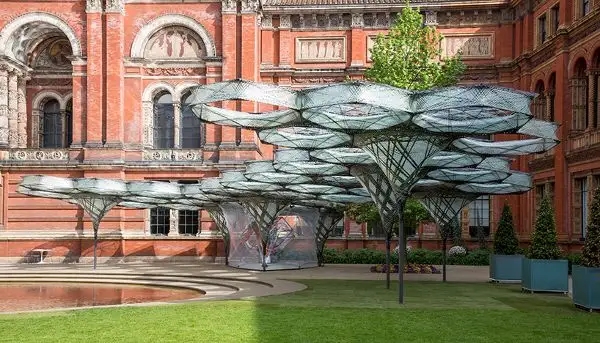
실험적인 건축가 Achim Menges와 Moritz Dorstelmann은 구조 엔지니어 Jan Knippers 및 기후 엔지니어 Thomas Auer와 협력하여 로봇으로 짠 탄소 섬유 키오스크를 개발했습니다. 파빌리온은 현재 런던 빅토리아 앨버트 박물관(V&A)의 존 마데이스키(John Madejski) 안뜰에 전시되어 있습니다. 파빌리온의 각 구성 요소의 디자인은 "날개 덮개"로 알려진 딱정벌레의 앞날개 구조를 기반으로 합니다. 200제곱미터의 구조물은 깔때기 모양의 브래킷으로 지지되며, 각각의 브래킷은 섬유로 코팅된 수지 단일 섹션으로 만들어지며 무게는 45kg입니다. 각 부품을 만들기 위해 수지 함침 유리 섬유와 탄소 섬유를 금형 프레임에 감은 다음 경화시켜 단단한 육각형 부품을 형성합니다.
이 기술은 구조 부품을 만들 때와 동일한 강도를 제공하기 위해 탄소 섬유의 재료 특성을 사용하도록 설계된 로봇 팔로 합성물을 감싸는 것과 관련이 있습니다. 이러한 일련의 개별 셀형 모듈은 파빌리온의 고유한 모양을 만드는 데 사용됩니다. 40개의 유닛을 각각 만드는 데 평균 3시간이 걸립니다.
9. ICD/ITKE 파빌리온
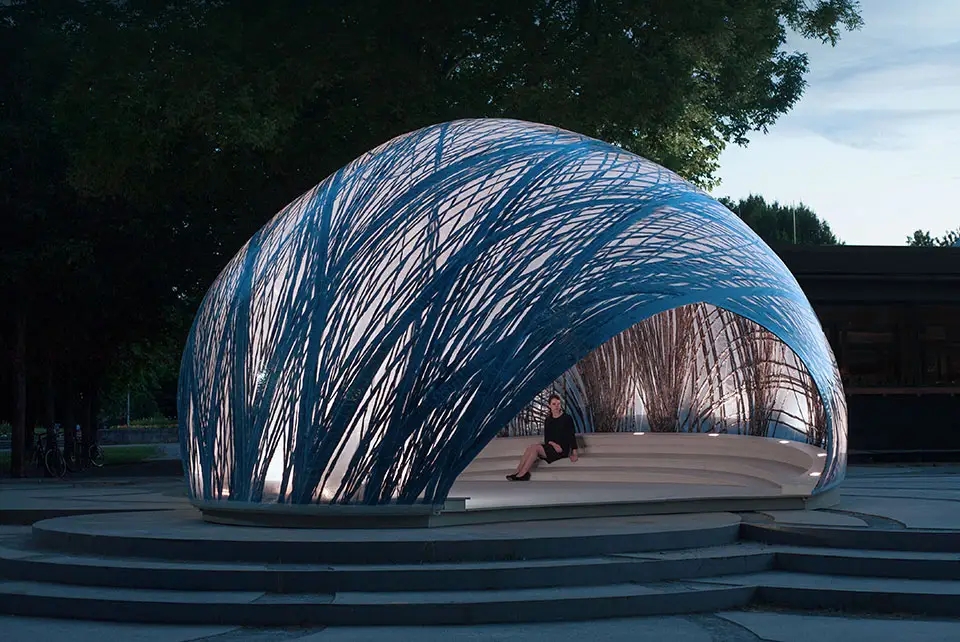
슈투트가르트의 Achim Menges 교수는 그의 새로운 ICD/ITKE Pavilion에서 수중과 수포에 사는 물거미의 중첩 방법에서 영감을 받은 새로운 아키텍처를 공개했습니다. 파빌리온은 구조적 안정성을 달성하기 위해 최소한의 재료를 사용하면서 구조를 강화하는 로봇 방식으로 직조된 탄소 섬유가 있는 부드러운 필름 위에 만들어진 경량 섬유 복합 쉘입니다.
10. 상하이 디즈니랜드 투모로우랜드
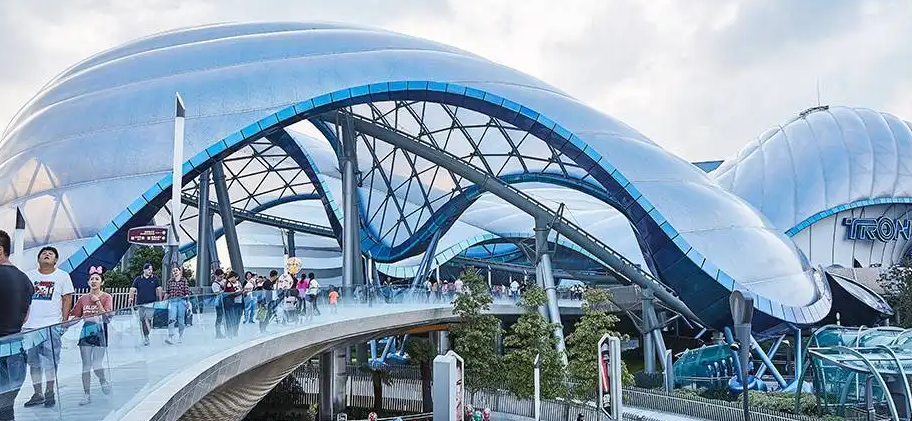
2300제곱미터가 넘는 면적을 차지하는 Shanghai Disneyland Daysun World의 광범위한 내부 및 외부 건물 구조와 좌석은 다양한 모양과 크기의 FRP 복합 성형 부품과 함께 수백 개의 난연성(FR) 접착 코팅 마감재로 구성되어 있습니다.









